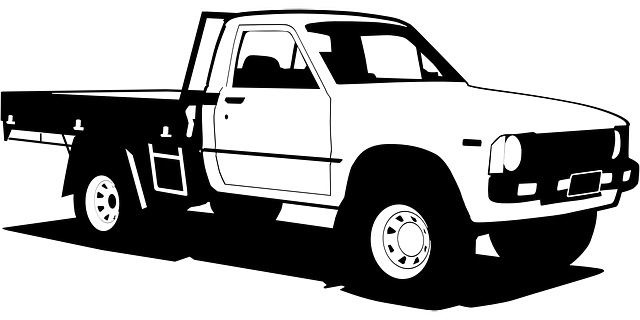When selecting and installing a truck battery, it's important to consider the type of vehicle, its electrical complexity, and the climate you operate in. Truck batteries primarily use SLI (starting, lighting, ignition) technology, with AGM (Absorbent Glass Mat) and EFB (Enhanced Flooded Battery) varieties standing out for their durability and performance in rugged conditions. AGM batteries are particularly suited to rough road conditions due to their spill-proof nature and resistance to vibrations, while EFB batteries guard against sulfation and perform well during engine cranking. Proper battery selection is crucial for optimal performance, safety, reliability, and efficiency in trucks. The cost of installation varies based on factors like truck model, electrical complexity, installation location, battery type, and regional differences, with heavier trucks or those with sophisticated electrical systems potentially requiring specialized batteries and tools. AGM or EFB batteries, though more expensive than traditional lead-acid batteries, offer better performance and durability. Installation complexity, including necessary wiring modifications or battery size adjustments, can also impact labor costs, which typically range from $50 to $150. The battery itself can cost between $100 for a standard lead-acid model to over $500 for an AGM or gel cell battery. Always ensure the installation is performed by a qualified technician to maintain warranty coverage and preserve the truck's electrical system integrity. If your truck has additional accessories like jump starters, GPS units, or advanced audio systems, these will affect both the battery size/capacity needed and the overall installation cost due to potential wiring modifications. Considering all these factors will help you choose a battery that fits your truck's requirements and budget while accommodating future upgrades.
When it comes to keeping your truck running smoothly, the health of its battery is paramount. A well-functioning battery not only starts your engine but also powers various accessories and electronic systems. This article delves into the cost implications of installing a truck battery, providing a comprehensive guide that covers everything from understanding the different types of batteries to the average expenses for various truck models. We’ll explore labor costs, parts and material fees, and the impact of additional accessories on your budget. Whether you’re considering a professional installation or opting for a DIY approach, this article offers valuable insights to help you make an informed decision. With a detailed analysis of average costs, maintenance considerations, and cost-saving tips, you’ll be equipped with the knowledge to choose the right battery for your truck’s needs and manage the associated expenses effectively.
- Understanding Truck Battery Types and Their Functions
- Factors Influencing the Cost of Truck Battery Installation
- – Labor Costs: What to Expect
- – Parts and Material Costs: Breakdown of Expenses
- 3. Average Costs for Different Truck Models and Battery Types
- 4. The Role of Accessories in Affecting Cost
Understanding Truck Battery Types and Their Functions

When addressing the intricacies of truck battery types and their functions, it’s crucial to delve into the different configurations that cater to the diverse needs of commercial vehicles. Heavy-duty trucks, which are the workhorses of transportation and logistics, often require starting, lighting, and ignition (SLI) batteries. These batteries are designed to handle the rigorous demands of starting a large diesel engine in various weather conditions. Additionally, absorbent glass mat (AGM) and enhanced flooded batteries (EFB) are popular choices for truck applications due to their robust construction and long service life. AGM batteries, for instance, offer spill-proof advantages and high vibration resistance, making them ideal for the harsh environments often encountered on the road. On the other hand, EFB batteries provide enhanced performance during engine cranking with features that protect against sulfation, a common issue in deep cycle applications. Truck owners must consider the specific requirements of their vehicle, including the size and model, to select the most appropriate battery type. This ensures optimal performance and longevity, as well as safety and reliability on the road. Understanding these aspects is key to selecting a truck battery that will perform efficiently under the varying conditions encountered in the transportation industry. Whether for commercial use or personal vehicles, the right battery installation can significantly impact a truck’s functionality and operational efficiency.
Factors Influencing the Cost of Truck Battery Installation

The cost of installing a truck battery can vary significantly based on several factors. To begin with, the type of truck and its make and model will influence the price. Heavier-duty trucks or those with complex electrical systems may require specialized batteries and tools, which can drive up installation costs. Additionally, the location where the installation is performed plays a role; dealerships typically charge more than independent auto repair shops due to brand-name parts and certified technician labor rates. The type of battery itself is a decisive factor, as AGM (Absorbed Glass Mat) or EFB (Enhanced Flooded Battery) options are generally pricier than traditional lead-acid batteries but offer better performance and longevity. Furthermore, the complexity of the installation—such as whether it’s a straightforward swap or if it involves rerouting wiring or retrofitting to accommodate the new battery size—can affect labor costs. Lastly, regional differences in labor rates and the cost of parts can lead to variations in total expenses for truck battery installations. It’s advisable to obtain multiple quotes and understand what services and components are included to ensure a fair price for the job. Considering these factors, truck owners should weigh their options carefully to balance cost with the reliability and efficiency of their vehicle’s electrical system.
– Labor Costs: What to Expect

When considering the installation of a new truck battery, understanding the labor costs involved is crucial for budgeting and ensuring the job is done correctly. Typically, the cost of labor for a truck battery installation can vary widely based on several factors. These include your geographic location, the make and model of your truck, and the specific service center or mechanic you choose. On average, motorists might expect to pay anywhere from $50 to $150 for professional labor, with some outliers potentially charging more for luxury or heavy-duty trucks. This fee generally covers the technician’s time and expertise in safely removing the old battery, installing the new one, and properly securing it in your truck, as well as performing any necessary diagnostic checks to ensure everything is functioning correctly post-installation. It’s always advisable to obtain multiple quotes for comparison, keeping in mind that the cost of parts is separate from labor and can significantly affect the overall expense, depending on whether you opt for an original equipment manufacturer (OEM) battery or a high-quality aftermarket option. Always verify with your service provider what is included in their labor charge to avoid any surprises.
– Parts and Material Costs: Breakdown of Expenses

When considering the cost of installing a truck battery, it’s essential to break down the expenses into parts and materials. The most significant cost factor is typically the battery itself. A high-quality truck battery can range from approximately $100 to over $300, depending on the brand, size, and capacity required for your specific make and model of truck. Advanced features like enhanced cranking power or auxiliary power capabilities can also influence the price.
In addition to the battery, the installation process involves various materials and labor costs. Labor rates vary widely across regions and service centers but generally range from $50 to $150 per hour. The complexity of the installation, which includes removing the old battery, preparing the connection points, installing the new battery, and testing the electrical system, can require one to several hours of work. Additional costs may include battery terminals, cables, or other related components that could be required if they are not included with the new battery. It’s advisable to obtain a detailed estimate from a professional mechanic or an auto service center to understand all the associated costs for your truck’s specific battery installation needs.
3. Average Costs for Different Truck Models and Battery Types

The cost of installing a new truck battery can vary significantly depending on the make and model of your truck as well as the type of battery you choose. For light-duty trucks like those from Ford, Chevrolet, or Dodge, prices typically range from $100 to $300 for conventional lead-acid batteries. However, opting for advanced options such as AGM (Absorbed Glass Mat) or AGM and gel cell batteries can increase the cost to between $200 and $500 due to their longer lifespan and enhanced performance in extreme temperatures. Heavy-duty trucks, like those from brands such as Freightliner or Peterbilt, will often require larger batteries to accommodate their more robust electrical systems. Consequently, these installations can cost anywhere from $150 to $400 for standard lead-acid batteries, with AGM or gel cell battery installations priced at $300 to $600. It’s always recommended to consult the vehicle’s service manual or a professional mechanic to determine the correct battery type and size for your specific truck model. Additionally, consider the warranty and expected lifespan of the battery, as these factors can influence long-term costs and savings. Always ensure that the installation is performed by a qualified technician to avoid any complications with your truck’s electrical system or warranties.
4. The Role of Accessories in Affecting Cost

When considering the cost of installing a truck battery, one must take into account the role that accessories play in the overall expense. A truck’s electrical system can be equipped with various auxiliary devices such as jump starters, GPS units, audio systems, and more, each of which draws power from the vehicle’s battery. The addition of these accessories can complicate the installation process, potentially increasing labor costs due to the need for additional wiring or modifications to accommodate the new components. For instance, integrating a sophisticated sound system might necessitate custom fabrication to ensure proper functionality and power supply stability. Additionally, the quality and type of battery selected can influence the cost; truck batteries come in various sizes, capacities, and technologies like standard lead-acid, AGM (Absorbent Glass Mat), or lithium-ion, with AGM and lithium options typically carrying a higher price tag but offering longer lifespans and better performance. It’s crucial to assess the number and type of accessories that will be connected to the new battery during the installation process to accurately predict the associated costs. This assessment can help in choosing the right battery and accessory setup for your truck, ensuring optimal performance while staying within budget.
When considering the investment in a new truck battery, it’s crucial for owners to understand the various types available and their specific functions. Factors such as labor and parts costs play significant roles in determining the overall expense of installation. This article has outlined these considerations, providing a clear breakdown of average costs tailored to different truck models and battery types, including the impact of additional accessories on the price tag. For a comprehensive understanding of the cost implications of installing a new truck battery, one must take into account both the direct costs of the battery itself and the labor required for its proper installation. With this information, truck owners can make informed decisions to maintain their vehicle’s performance without unnecessary financial strain.
